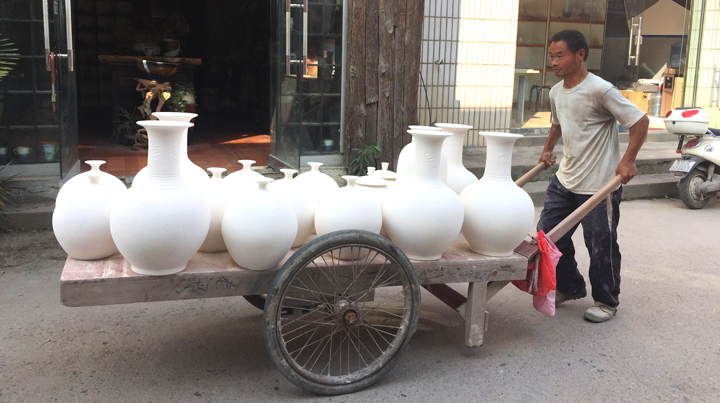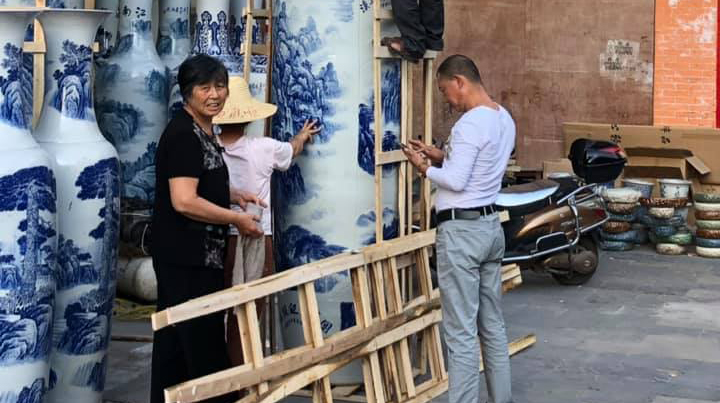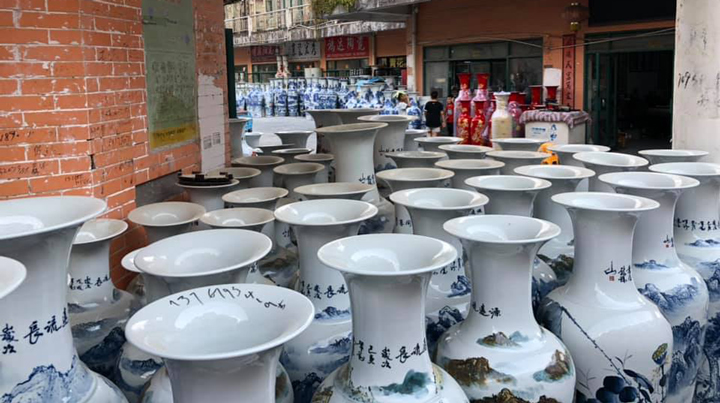In the northeastern part of Jiangxi province lies Jingdezhen, the porcelain capital of the world. When Colorado Mesa University Associate Professor of Art KyoungHwa Oh first stepped off the plane in Shanghai, she heard locals describe Jingdezhen as “the small countryside.” With a population of around 2 million, Oh couldn’t help but laugh. Coming from western Colorado, she didn’t consider that size of a city to be small. But what’s unique about the city isn’t the number of residents, but how many of them are ceramic artists; and how they are all working toward one purpose: to continue the techniques traditional to their culture for over 2,000 years. This was what brought KyoungHwa Oh to China.
In June, Oh was accepted into The Pottery Workshop and became an international artist resident. During her 20 years working with porcelain, she had always been fascinated by the ancient Chinese tradition.
The blue and white combination is a traditional ceramic technique specific to Jingdezhen. They use special color pigments called cobalt carbonate and copper carbonate that they mix with tea water and paint on to the clay surface to create a design with traditional Chinese motifs and landscapes. Their master carving techniques and the blue and white painting techniques were created and developed during the Song Dynasty. Their unique methods have been passed down for generations, from master to master.
Oh’s passion hasn’t always been ceramics. She first came to the United States from Seoul, South Korea to be a fashion designer. It was in the U.S. she discovered a love for clay, its texture and the way it feels in her hands. She found when she worked with clay, her mind became quiet, peaceful.
She found that same sense of peace walking down the bustling streets of Jingdezhen.
“The first day it blew my mind. I couldn’t believe there were that many people working on ceramics. There were more than 1,300 masters working in one sculpture factory,” said Oh.
Oh says everywhere she looked, there were masters of the craft: mold masters, wheel-throwing masters, painting masters, kiln masters and so on.
“I found an entire block that was only filled with glaze shops and it went on forever. I was like a kid in a candy shop. I was so excited,” said Oh.
During her five weeks in China, she took a number of workshops, from painting to carving, and CMU students are benefiting from her experience. Earlier this month she held a lecture at the Art Center and throughout the academic school year she’ll be teaching the ancient techniques to her students.
Oh finds her inspiration through residencies and workshops, which she attends annually. They allow her to integrate new techniques into her studio practice and network within the professional ceramic community.
“I enjoying learning through other people and their environment,” said Oh. “When you go to a different place, you feel it through your entire body. I don’t get inspired by just sitting in the studio.”
She says it was remarkable to see the efficiency that comes with thousands of years of experience and knowledge.
“It’s easy to rely on technology, but they don’t. They have failed time and time again until they figured it out,” said Oh. “It completely changed my mindset. When I see a 'made in China' label I think back to the people in Jingdezhen and how hard they work.”
Oh said the residency program changed her work, and she’s still practicing and getting better at the techniques here at home.




